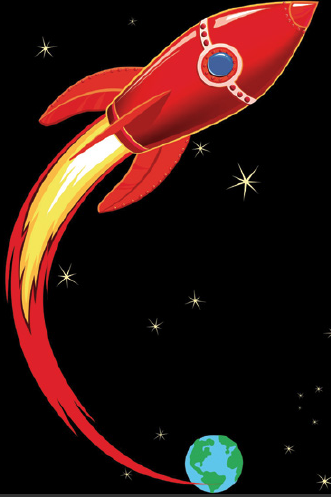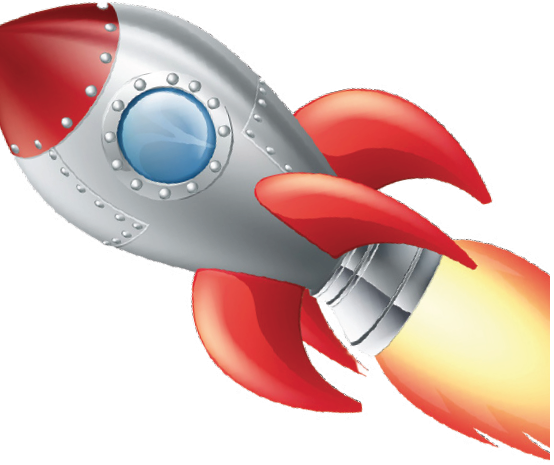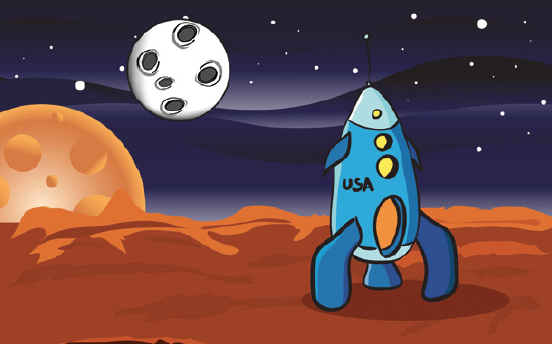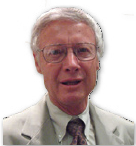The early years of the U.S. space program were challenging, stimulating, memorable, and even, on occasion, humorous. Gather any vets of those programs for a lunch or happy hour and the fun tales emerge.

Several of those gatherings are General Dynamics employees who worked on important early, and continuing, Atlas and Centaur space boosters and upper stages. Starting a couple years ago, many of those have sent in their tales as inputs to a possible book of humorous anecdotes.
Some of those tales date from the mid ‘50s, when the U.S. started to get serious about space activities, though initially the primary efforts were more for military applications vs. the many space operations ongoing today. Here are a few of those stories from GD people, in roughly chronological sequence and at locations in San Diego (main plant), Cape Canaveral (later Kennedy), Vandenberg AFB, and various related locales.
Getting Those Atlases Up
From Robert Risley, Propulsion/Fluid Systems Design
Back then, this was not an easy task—during the final stages of a launch countdown at Cape Canaveral, most of the Tiger Team went to Hanger H and listened to the count on loudspeaker. The last few minutes before launch we would climb the ladder to the roof to see the liftoff—at least, some of us younger ones did. What an experience, to see the culmination of everyone’s efforts and teamwork!
Those were exciting times. When there was a launch success, post-launch parties, thrown by the marketing department in a Cocoa Beach motel room, were standard fare. Failed missions were a huge disappointment to all team members, regardless of the cause. Everyone was anxious to pitch in and do their part in the failure investigation. The camaraderie in the program will never be forgotten.
Saving Eisenhower
From Clay Perkins, Test Labs Instrumentation Design
My first job after getting my MS in physics at Texas U. was an analysis of the Atlas propellant utilization system (the notorious “PU System”—lots of jokes), which led to my crawling inside the engine compartment of the Atlas that launched President Eisenhower’s Christmas message to the world in 1958—America’s answer to Russia’s Sputnik.
Atlas missile 10-B was sitting on the launch stand with fuel aboard, but the PU system was giving erratic signals. I was rushed to Cape Canaveral to help—this was only 10 months after I started work. My analysis and tests had focused on helium purge gas dynamics—things like what happened to the PU output when the tanks were pressurized?
After a day of testing and data analysis, nothing made sense. We weren’t told why, but we were being pushed; as a last resort, I insisted on squeezing into the engine compartment to examine the base of the fuel tank.
With fuel aboard, this broke all safety rules, but I eventually managed to get permission. A safety man had to accompany me; that really helped!
Luckily, I was pretty skinny; with some effort I was able to squeeze up past the sustainer engine by loosening its skirt. With a flashlight I checked all the purge lines—no kinks, dents, or other oddities. I was on a headset and the entire blockhouse was listening.
In desperation, I put my ear against the tank wall, which was far easier said than done, and heard something odd. I pushed talk, “I just listened to the tank. It is going ‘bzzzz,’ instead of ‘glug glug glug’.”
Long pause, then, “WHAT?” was received in my headset.
I repeated and added, “The helium should be coming out in big bubbles, not little ones.”
“I think you better come back up here. We need to talk.”

By the time I made the long walk back to the blockhouse, it was clear to me that the fuel purge tube was partially blocked and that we had to pull the tubing, which meant detanking. Seemed simple to me, but all hell broke loose when I walked in and said, “You got to detank.”
The test conductor (I don’t remember who that was) wasn’t having any of that; he knew how critical the schedule was—the rest of us had no idea.
After a great deal of conversation, I won (because the TC knew that a working PU was needed to make orbit)—they started draining the tank, while threatening to fire me if I was wrong!
Hours later a mechanic pulled out the bottom section of tubing and handed it to me. Sure enough, the perfectly standard 1/4-inch coupling at the tank wall—wasn’t! It had a steel plate welded over its end with a tiny hole drilled through it—just the size to go “bzzzz.”
The coupling was replaced, fuel tanking was started again, and I turned from suspected goat to a hero and President Eisenhower’s voice was launched just in time on December 18, 1958.
Back in San Diego, a witch hunt found that the strange coupling had been made for the Point Loma battleship tank, but no one could explain how in got into the factory parts line.
Who’d That Atlas Boost First?
From Tom Phillipp, San Diego, Launch Operations
I had the dubious distinction of having been on the launch team in the blockhouse for what I think has been—to this day—the biggest explosion at ground level in the history of the Cape (September, 1959), Atlas-Able 9C for Project Ranger, the first lunar impact payload program.
The concussion was great enough to suck air out of the blockhouse’s closed doors. When the equalizing repercussion sprung the doors open, the security guard in front of the doors was propelled and sent flying to end up spread-eagled on the blockhouse floor.
We later kidded him about being the first man propelled by an Atlas, and not John Glenn.
Mercury Nervousness?
From Bob Voth, Structural Design
During the middle of the Mercury Program, several of the original seven astronauts were visiting the General Dynamics facility to review the progress on the next launch vehicle.
We were gathered around a drafting table in the mechanical engineering area. Charlie Pruckner asked them, “How does it feel to be launched into space?”
I believe it was Gordon Cooper who answered, “It is a bit disconcerting to know you are riding on low bid hardware.”
How We Got To The Moon
From Bob Eidson, Propulsion Systems Engineer
During a visit to MSFC (NASA Marshall) to give the folks there an update on General Dynamics’ testing of the Centaur (Cruiser Tank w/Boost Pumps, Engine Feed System Ducting, Pressurization System and Vent Valves, and so on), I showed a film of the LH2 (Liquid Hydrogen) Tank Interior, which included Pressurization and Venting Cycles with the pumps operating and with a propellant level of about 60 percent.
Vigorous boiling of the LH2 occurred during venting! One of the Germans in the audience commented (German Accent here) “I do not understand zis action!!“
A voice from the audience, a chap by the name of Werner Von Braun, responded “Did you effer open a can uff hot bier ???”

Some Key Expertise To Enter Onto Your Résume´
From Don Sullivan, Sr. Engineer, later,Vice President of British Aerospace
My experience on the Atlas program began in 1956 when Atlas A-1 was in the early stages of completion. The engineering department was located in a huge upstairs area above the manufacturing building.
We subsequently were transferred to Vandenberg and prepared ourselves to be able to transport the first production missiles to Cheyenne, Wyoming.
The “D” series missiles were installed in horizontal launch sites and required special equipment called “The Erection Mechanism.” I was given full responsibility to direct the installation, testing and operation of all the equipment required to erect the missile.
Once again, I loved every minute spent working on that system. I even prepared a trouble shooting manual called “The Erection Mechanism” by Don Sullivan. I soon became known as “The Erection Expert.”
We worked many hours to activate the first group of Atlases that were being installed in an operational site. Near the completion of our schedule, we were visited by General Curtis LeMay, who was the top general in the Air Force at that time. He arranged for a group of Hollywood entertainers who had just finished putting on a show for the Air Force troops at Warren AFB the previous night. We had specific instructions to have our engineers on station at every support system to explain to the group how everything worked. I was directed to be prepared to erect the missile as soon as the group had completed their tour as a grand finale.
My location was at a panel near the launcher, approximately three feet above the main pad floor. When the group reached that location, a vision of loveliness stopped directly below my position. She placed her delicate little hands on the top of a hard hat that everyone had to wear and in her sweet voice asked me what my job was. I replied “I am the erection expert.”
Her response was “Oh really” with a big smile. General LeMay almost swallowed his cigar but had to immediately clear the area as I pressed the erection switch and the missile went vertical. The young beauty turned out to be actress Angie Dickenson.
Now this brings me to the real punch line that occurred almost 30 years later when an act of God occurred and I ended up on an aircraft sitting next to Angie. She was unbelievably friendly and talkative.
We were sitting in the first row of the aircraft and had no problem being served cocktails. She discussed her recent divorce from the orchestra leader Burt Bacharach, while I was dying to mention our previous encounter.
Three cocktails later, I mentioned the fact to Angie that we had met before. She looked at me and said she was sorry, but could not remember any previous encounters. I followed up by reminding her of her visit to an Atlas Missile Site with General Curtis LeMay. She immediately responded that she could never forget that event.
I took another gulp of my third cocktail and I asked her if she remembered meeting the “Erection Expert?”
She almost choked on her drink and immediately responded “Was that you!!!”
She talked about how, when the group returned to Hollywood, they could not stop talking about the huge missile that they had seen—she followed those comments by proudly stating, “I met the Erection Expert!”
Getting Proper Respect At Vandenberg
From Bill Haire, Guidance Analysis
In the early sixties, when sent to Vandenberg to support Atlas/Agena space launches, we stayed in Santa Maria. Transportation was supplied via company taxi to and from Vandenberg, which ran twice a day (once early in the morning and again in the evening).
On one occasion, Jim Johnson and I were supporting an early morning launch which was eventually scrubbed. Returning to the General Dynamics compound (via way of either GE or Burroughs personnel, as we didn’t have our own transportation), we were informed that we would have to wait around for the rest of the day until the evening taxi to Santa Maria came by.
After wandering around, or sitting on our brief cases all day, when the taxi finally arrived, we were informed that it was already full and it could only take one of us.
This infuriated Jim, to the point that he told the taxi driver that room would be made for the both of as we had been waiting all day. Jim added that he would kick the driver out and then he would drive the taxi. The taxi was a station wagon, and, finally, one of us ( I can’t remember which one) was allowed to lay down in the back for the long ride back to Santa Maria.
One Small... “Whaa...” For Mankind???
From John Medina, Security
General Dynamics was testing a vehicle for Hughes Aircraft Company at a building at the far end of the KM property, close to the Maxwell Labs Building.
All personnel were required to wear lab coats, caps, booties and white gloves. The article being tested was called ‘The Moon Lander,’ which was designed to take moon soil samples and send the results back to Earth.
One evening, all personnel left for their evening meal. I was the lone security person there. The structure housing the item was enclosed in a very large teepee-like tent.
I said to myself, “If that is going to the moon, I have to take a look at it.” I unzipped the opening and walked around it, marveling at this structure. It was a giant tripod in configuration, with a small under-belly housing. Below that was a small scooper-like device. The legs of this giant tripod and vehicle were covered with gold foil.
After one more walk-around, I stopped and said to myself, “If this thing is going to the moon, my thumb print is going to the moon.”
I took off my right-hand white glove and gently pressed my right thumb against the gold leaf tripod leg.
The vehicle was successfully launched and sent the data back to Earth—and one small thumb print landed on the moon.
I’ve told no one about this before. Now, when I look up at the moon, I remember Neil Armstrong and the rest of the astronauts, and my one small thumb print that hitched a ride on a gold leaf tripod leg.
Atlas Payloads – Up, Up And Away... Really
From Roland Sedlund, Advanced Programs
In the 1960’s and 1970’s, we were receiving many requests for programs which could be adapted to the Atlas F launch vehicles, which were declared surplus by the Air Force.
One request we received was from a company which saw a need for launching the ashes from deceased persons into orbit. I suggested calling this program “Up your Ashes,” but the program never flew. Hmmm, perhaps because of an inappropriate name?
One More, From Your Fun Tales Collector
Tom Leech, Business Development, etc.
In February of 1962, John Glenn became this country’s first person to orbit the Earth, lifted there by the General Dynamics Atlas.
Scott Carpenter, Wally Schirra and Gordon Cooper followed, making for a 100 percent program success.
Advance to 1997 to a Coronado book signing by the three Navy pilots, all San Diego residents and authors of From Wildcat to Tomcat. One of the pilots was Wally Schirra.
After hearing about my having worked on the Mercury Atlas program, he signed my copy, “Thanks for the lift—it was not a blast.”
So there you go, upward—really—and onward. I invite readers to scratch their chuckle memory banks and email me their own amusing anecdotes, whether from their days with General Dynamics or other space organizations (tleech@san.rr.com).

About the author
Tom Leech is a long-time free-lance writer and columnist with more than 200 articles in San Diego Magazine, Smithsonian Air & Space, Presentations, Executive Update, Frontier Airlines In-Flight Magazine, The Toastmaster, Sales & Marketing Excellence, Manage, Master Salesman, Business Journals.
For San Diego Magazine, Tom was a regular contributor of feature articles, Business Columnist, as well as the Editor of the Online Outdoors Forum.
He is also the author of several books: How To Prepare, Stage & Deliver Winning Presentations (AMACOM), Say It Like Shakespeare (McGraw-Hill), Outdoors San Diego: Hiking, Biking & Camping (Premier) and On the Road in ‘68: a year of turmoil, a journey of friendship (Presentations Press). His other hat is as presentations/public speaking coach.
Tom may be contacted at tomaseb@aol.com. And the author has a special thanks to General Dynamics’ rocket propulsion colleague, Bill Ketchum, for connecting me to the SatMagazine editorial team.
To obtain Tom’s recent book, “On the Road in ‘68: a year of turmoil, a journey of friends,” access this direct amazon.com link. (paper back or e-book)
This article is copyright, 2013, Tom Leech.

